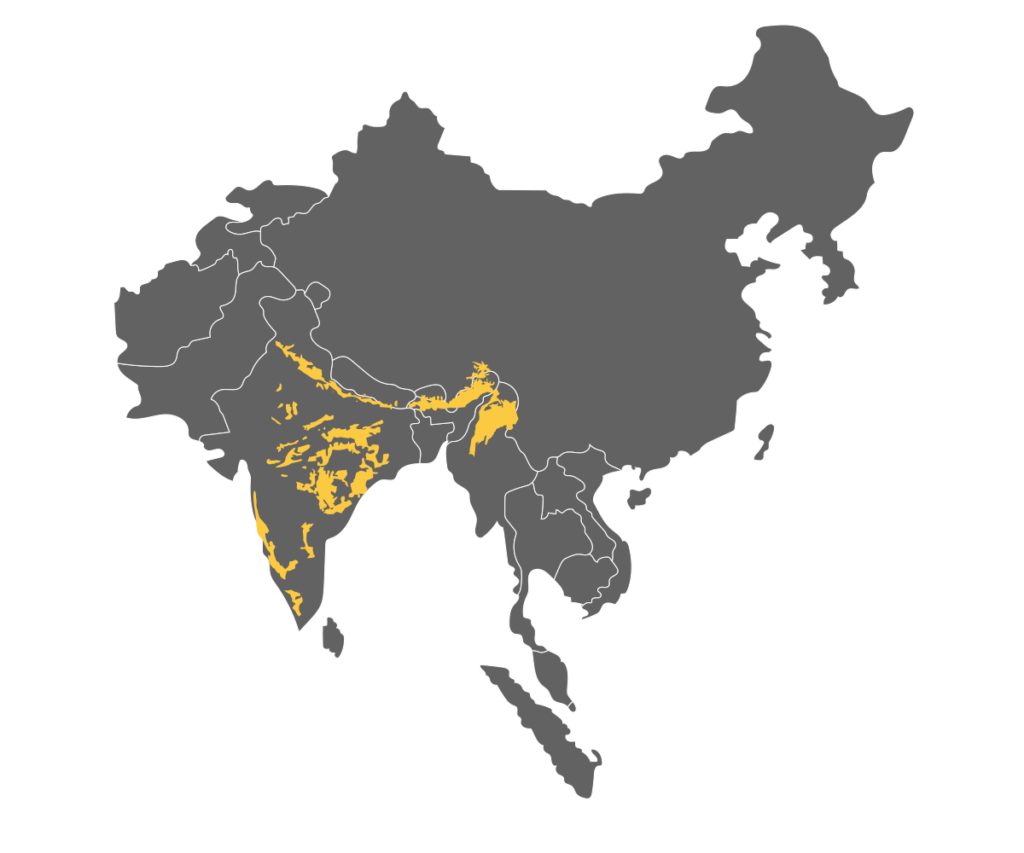Conservation Status:
Endangered

HABITAT
JUNGLE
DIET
CARNIVOROUS
SOCIAL LIFE SOLITARY

WEIGHT
100-200 Kg
GESTATION
100-110 DAYS


Tigers are easily distinguished for being the only big cats with stripes. The stripe pattern is black, against an orange background, but the ventral part of the body is white. Every pattern and stripe distribution is unique to the individual, no two tigers have the same stripes. The stripes vary in width, separation, length, and in whether it is one single stripe or a double stripe.
As other big cats, tigers are formidable predators, exceptionally well adapted for preying on larger species. The tiger has short but powerful hind legs, long retractile claws, a long, thin body and a very wide neck, with sturdy shoulders, all of which makes it able to subdue prey larger than itself. The skull of a tiger is flat and this equips the jaw with greater strength and the capacity for a literally crushing bite.
Tigers are predominantly solitary creatures that spend most of the year living and hunting alone. A tiger will patrol and defend a territory from same sex individuals. A male’s home range is larger than that of a female and generally a male’s territory will overlap with the territories of several females. Boundaries are marked with urine and scratches made on trees or rocks. They will also leave dung and scrapes along the trails to warn other tigers of their presence. Territorial marking is a way of communication for tigers and provides information on the identity, sex and reproductive state of the tiger.
